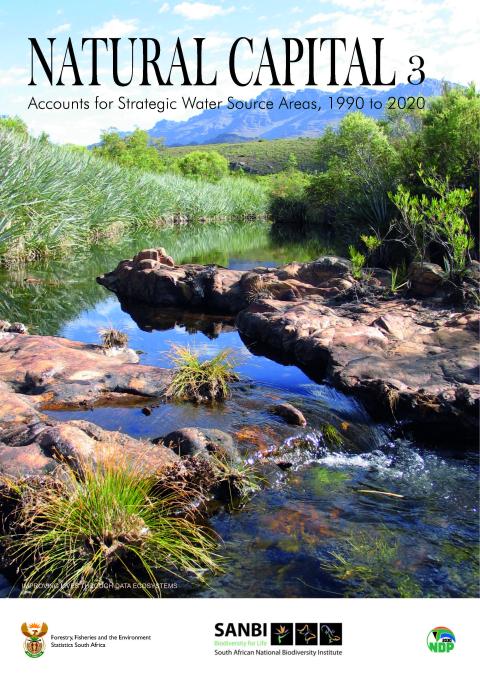Accounts for Strategic Water Source Areas, 1990 to 2020

Document Summary:
The Accounts for SWSAs, 1990 to 2020 profiles all 22 of South Africa’s SWSAs for surface water in relation to the biomes, provinces, district municipalities and Water Management Areas over which they fall. It also gives population statistics for SWSAs, and accounts for changes in land cover and protected areas within SWSAs over three decades from 1990 to 2020. Change is reported for all SWSAs combined and then for each SWSA individually, divided into three accounting periods: 1990 to 2014, 2014 to 2018, and 2018 to 2020.Natural capital accounts such as these accounts for SWSAs strengthen the evidence base for government planning and action, helping to ensure it is based on the best available science and data. Each SWSA has its own story to tell, with different planning and management implications. Spread across the country, the 22 SWSAs are economically important areas that vary considerably in context and socio-economic activity. Understanding the context of a particular SWSA is essential. It is particularly important for informing action to secure SWSAs, including actions to better manage SWSAs, avoid or reduce negative impacts where possible, and restore land and ecosystems in SWSAs where necessary. The Accounts for SWSAs, 1990 to 2020 were published by Stats SA, in collaboration with SANBI and the Department of Forestry, Fisheries and the Environment (DFFE), as the third discussion document in Stats SA’s Natural Capital series. They were compiled through the Ecological Infrastructure for Water Security (EI4WS) Project, which is funded by the Global Environment Facility, implemented through the Development Bank of Southern Africa, and executed by SANBI in partnership with DFFE, DWS and other partners.
Link to an External Document:
